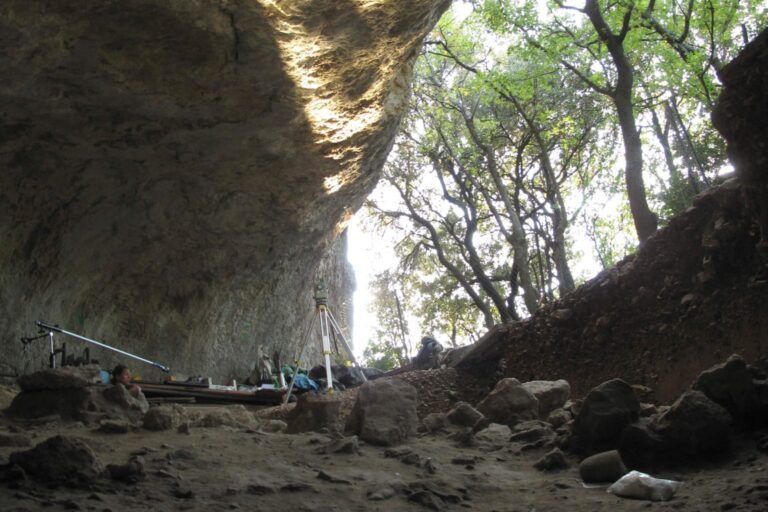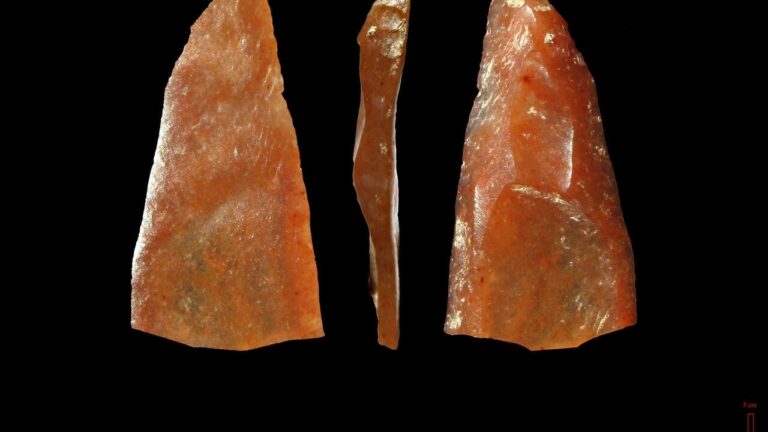New archaeological research suggests that Homo sapiens entered Neanderthal land in Europe far earlier than previously assumed.
Until now, archaeological findings had shown that Neanderthals vanished from the European continent around 40,000 years ago, just 5,000 years after their “relative” Homo sapiens arrived, and that no evidence of a meeting between the two species existed.
The latest discovery, made by a group of archaeologists and paleoanthropologists led by Toulouse University’s Ludovic Slimak, puts the emergence of Homo sapiens in Western Europe at around 54,000 years ago.
Another fascinating discovery of the study is that the two species of humans alternated in occupying the Mandarin cave in what is now southern France’s Rhone area.
“The discoveries give archaeological evidence that these hominin relatives coexisted in the same region of Europe at the same time,” the researchers added.
The scientists used new techniques to date some of the human remains to around 54,000 years ago, which is over 10,000 years earlier than previous findings in Europe, except one in Greece.
“This extends the known age of modern people colonizing Europe,” said Michael Petraglia, a prehistory researcher at Germany’s Max Planck Institute for the Science of Human History.
Petraglia, who was not involved in the research, said it has significant implications for understanding contemporary human evolution and our connections with Neanderthals.
The researchers claimed they spent more than 30 years sifting through layers of dirt within the cave, which is located 140 kilometers (87 miles) north of Marseille, France.
Hundreds of thousands of items were unearthed, all of which could be attributed to either Neanderthals or modern people. These featured complex stone tools are known as “points” that were used to cut or scrape by Homo sapiens – our closest predecessors – as well as spear tips.
Similar tools from approximately the same era have been discovered 3,000 kilometers (almost 1,900 miles) away in modern-day Lebanon, indicating that contemporary humans with a shared culture may have crossed the Mediterranean Sea, according to Ludovic Slimak, one of the study’s primary authors.
Despite the lack of evidence of cultural contacts between the Neanderthals and modern humans who alternated in the cave, the researchers believe the quick succession of residents is important in and of itself. According to Slimak, the cave changed hands on one occasion in less than a year.
The findings, according to Katerina Harvati, a paleoanthropology professor at the University of Tuebingen in Germany who was not involved in the study, “upend the concept that much of Europe was the sole realm of Neanderthals until 45,000 years ago.”
She did point out, however, that Homo sapiens’ first foray into the region was not especially fruitful.
“Mandarin modern humans appear to have only lived for a short time before being supplanted by Neanderthals for millennia,” she added.
The finds at Mandrin, according to Slimak, an archaeologist at the University of Toulouse, imply the Rhone River may have served as a vital conduit between the Mediterranean coast and continental Europe.
“We’re dealing with one of the old world’s most significant natural migratory routes,” he added.
Based on the mountain of data acquired from the cave, he and his team anticipate publishing numerous more noteworthy results.
Slimak claims that a regular supply of sand brought in by the Mistral breezes has helped preserve a treasure trove that rivals that of other well-known archaeological sites.
“Mandarin is like a neanderthal Pompeii, without the cataclysmic catastrophes,” he explained, “but with a continual replenishing of sands in the cave deposited progressively by a powerful breeze, the Mistral.”

























